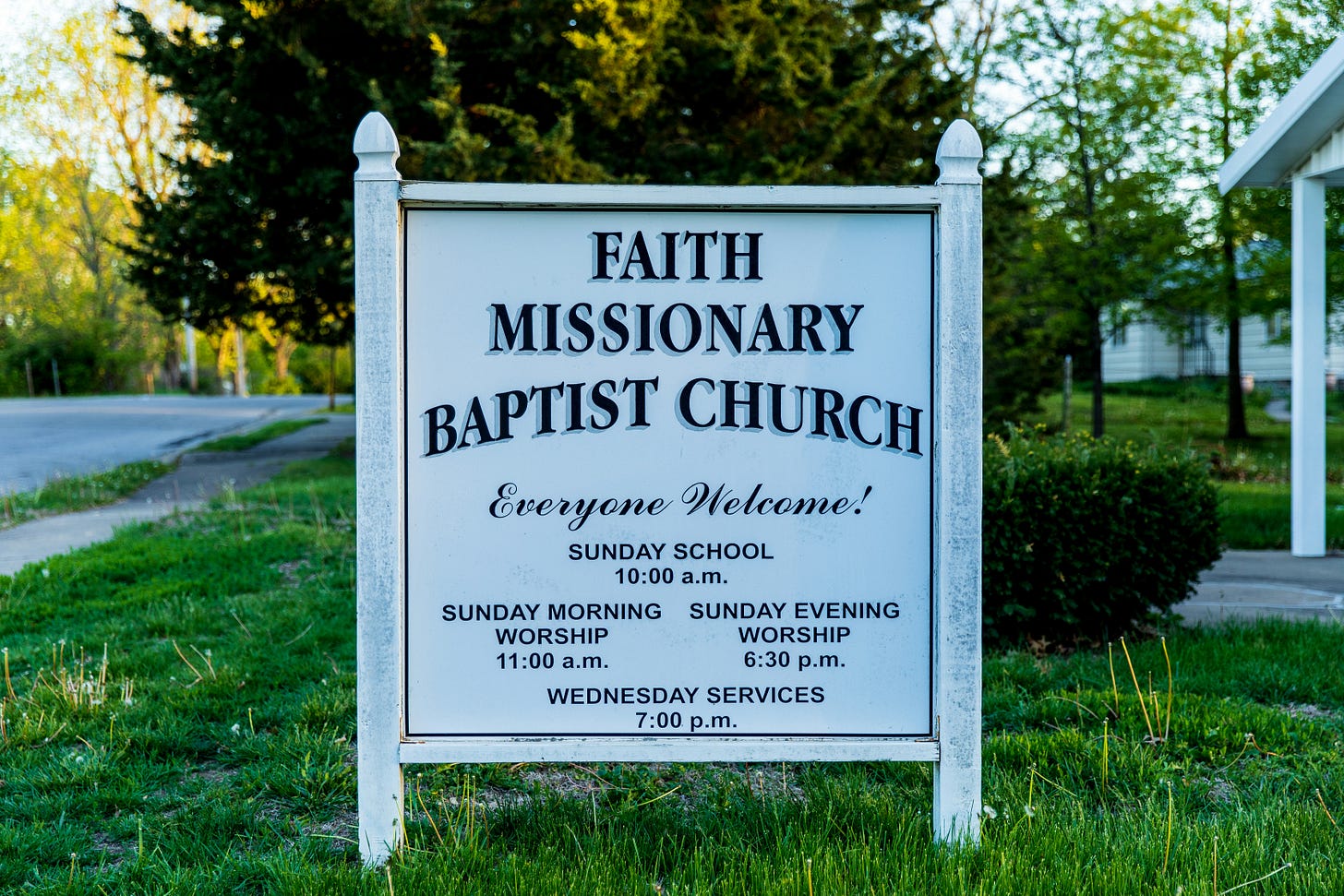Mayfly Meanderings on the Book—The American Religious Landscape: Part Four
Topics: Black Baptists and the Miscount. The Disappearance of Judaism

The American Religious Landscape—Part Four on Meanderings Eight and Nine
This is the fourth of a new series entitled Mayfly Meanderings. It refers to reflections on books, manuscripts, presentations, research, articles, and other information and knowledge which I find interesting. I hope these lead to greater wisdom for you and me both.
Read Part One HERE on more than survey research and the limits of survey research.
Read Part Two HERE on decline of Christianity, rise of non-denominationalism, and evangelical trends.
Read Part Three HERE on Mainline Protestantism and high expectations vs. low expectations.
Book: Ryan P. Burge. The American Religious Landscape: Facts, Trends, and the Future. New York: Oxford University Press, 2025. See this book HERE.
MM Eight—Black Baptists and the Miscount: The ongoing miscount of Black Baptists reported in this book is no mystery. A couple of years ago, I communicated with Ryan about this miscount in an earlier piece he wrote. He shared the source of the incorrect figures, noting he was simply reporting what they said, along with the categories they used.
Their figures remain incorrect, but survey researchers seemingly take pleasure in publishing inaccurate data. I suppose they are unaware of any other means to obtain reliable figures on Black Baptists.
Here is one way to assess this: I may not be correct, but I feel compelled to share it.
There are four primary and formally organized denominations of Black Baptists in America. Listed from the largest to the smallest, they are the National Baptist Convention, USA; the National Baptist Convention of America; the Progressive National Baptist Convention; and the National Missionary Baptist Convention.
Black Baptist congregations may be affiliated with one or more of these denominations. Their pastors may as well. At times, pastors may belong to one or more local associations of Black Baptists, which also have affiliations with one or more of the four national denominations.
Furthermore, over 1000 Black Baptist congregations and their pastors are part of the Southern Baptist Convention and/or a local association of SBC congregations. Some congregations and pastors are exclusively Southern Baptist, while others are also affiliated with one or more of the other four denominations.
Confused yet? It gets worse.
Historically, and during the decades preceding the establishment of the four Black Baptist denominations, many Black Baptist congregations were known as “Missionary Baptist” congregations. This designation applies to congregations in all four Black Baptist denominations and may also pertain to some Southern Baptist congregations.
Therefore, when researchers report that the smallest of the four Black Baptist denominations—National Missionary Baptist Convention—is actually the largest of the four, it is because the idea of being “Missionary Baptist” is stronger than the allegiance to any of the four Black Baptist denominations.
If you ask a pastor, a staff member, a layperson, or even a denominational leader among Black Baptists what type of Baptist they are, they may say “Missionary Baptist”, regardless of their true affiliation.
It is the same reason many people refer to a tissue as a Kleenex, a refrigerator as a Frigidaire, and a vacuum cleaner as an Electrolux.
Researchers cannot obtain reliable information if they do not know how to ask the right questions. Additionally, not all denominations maintain good records.
MM Nine—The Disappearance of Judaism: In the case of Judaism in America, this is where I stick my neck out. I predict Judaism as an active faith will largely disappear in America by 2070. As a religion it will still be practiced by Orthodox Jews and other small conservative almost sect-type groups. But as a robust active faith it will disappear in its Conservative and Reformed expressions.
I first started saying this 30 years ago, so it is not a new observation. Information in this book affirms with statistics some of my impressions, observations, and readings. As in the case of Mainline Protestantism’s disappearance stated earlier, it is not something for which I hope.
Several parts of this book support this idea directly or indirectly. For example, people who claim Judaism as their religious faith are the least religiously devout of the faith categories in this book with only 20% seeing religion as very important and that they pray daily. This compares to Mormons, Evangelicals, and Black Protestant where more than 70% see themselves as devout. [82]
Another survey shows only 23% of Jews say religion is very important in their lives. That compares to 64% of Protestants and 41% of Catholics. [129]
Fifty percent of Jews report they “never” or “seldom” pray outside of religious services. [194] Only 14% say they pray multiple times per day. [174]
The highest percentage of Jews are either liberal or only moderate according to which Jewish tradition with which they identify. Reformed Jews are 40-45% and Conservative are 20-25%. Whereas Orthodox—the largest more conservative group—are only 10%. The other 20-30% are divided among various other groups or did not identify themselves with one of the traditions. [131]
An important factoid is this: “Judaism has a relatively high rate of retention with 84% of individuals who were raised Jewish still identifying as a Jew in adulthood.” [127] This may at first appear to be promising about the future of Judaism. But a deeper set of questions need to be asked to see if people identify primarily as Jewish religiously, ethnically, culturally, or nationally.
“For some Jews, their understanding of Judaism is entirely nonreligious. Instead, they understand Judaism to be about culture—holidays, food, and shared history.” “There’s no inherent contradiction for an individual to describe oneself as a Jewish atheist.”[128]
This does not mean the Jewish movement is going away. Jews will certainly have great influence on American society for a long time. But perhaps more culturally than anything else.
Next: MM Ten on Mormons and Their Missionaries. MM Eleven Aging vs Young Families.
OR . . .

